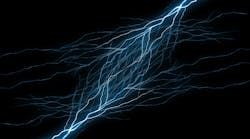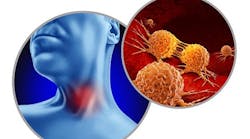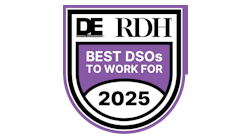Dental hygienists are broadly educated in common systemic illnesses, oral pathology, and communicable diseases. Presumably, every hygienist encounters patients who present with health conditions they aren’t familiar with, and this is likely the case regarding trigeminal neuralgia (TN). This rare condition is twice as prevalent in women as men and is often undiagnosed, misdiagnosed, or underdiagnosed.
Also by the author ... Best practices for dental unit waterline management
What is trigeminal neuralgia?
The trigeminal nerve sends vital facial sensations and information to and from the brain. When patients experience TN, some describe it as the most excruciating pain known to humankind. This intense pain has been reported as an electrical shock commonly felt only on one side of the face.1 Trigeminal nerve pain affects approximately 150,000 people per year and can be triggered by simple daily tasks such as:
- Brushing/flossing
- Smiling
- A light touch
- Eating
- Opening and closing the mouth
- Drinking
Initially, pain from TN can last seconds. But as the condition persists, the episodes of electric sensations can last minutes or even longer.2 The onset of TN typically occurs in women age 50 or older; if symptoms are present in women under 40, it is recommended that they also be evaluated for multiple sclerosis.
More about trigeminal neuralgia ... Trigeminal neuralgia: The suicide disease
The trigeminal nerve is often referred to as the fifth cranial nerve. There are two trigeminal nerves that are bilaterally located on either side of the head. From there, the trigeminal nerve extends into branches and roots. While the specific etiology of TN is unknown, two types have been identified: primary trigeminal neuralgia and secondary trigeminal neuralgia. Primary trigeminal neuralgia is associated with the compression of a blood vessel on the trigeminal nerve near the junction of the brain and the spinal cord. Secondary trigeminal neuralgia is a result of pressure from a secondary source such as a tumor, MS, injury, or trauma.3
Since TN is a rare neurological disorder, it can be challenging to find physicians who are familiar with its diagnosis and treatment. Patients must often see multiple providers in a variety of disciplines before a diagnosis of TN can be determined.
Treatment options for trigeminal neuralgia
In the past TN was referred to as “the suicide disease” because of the psychological impact on the patient.4 Patients reported extended periods of depression, anxiety, delayed diagnosis, and disturbance in sleep. Dental complications of TN can range from dental anxiety to fear of dental pain and/or dental treatment, which can prompt TN episodes to return. Long-term exposure to the psychological effects of TN can lead to suicidal ideation in some patients. A prompt and accurate diagnosis can minimize the psychological impact of TN. However, if there are any mental health concerns, an appropriate mental or behavioral health referral is recommended.
Patients who have been diagnosed with TN have limited treatment options, and there remains no cure. Symptom management and palliative care are vital lifelines. Currently, treatments include nonsurgical options with the use of anticonvulsants, such as gabapentin, oxcarbazepine, or carbamazepine. Surgery may be an option when medications are no longer effective, the side effects of the medications are no longer tolerable, or the pain from TN is no longer manageable.
Trigeminal neuralgia and dental patients
Dental professionals play an important role in recognizing and referring TN patients. Patients experiencing TN have extreme facial pain, which can be associated with dental pain. Dental clinicians are frequently the first providers patients seek to find relief from unknown facial pain. Thorough intra- and extraoral examinations—including radiographs and examination of lymph nodes, temporomandibular joint, and salivary glands—should be performed to rule out any pathological concerns.
An article published in Decisions in Dentistry in 2021 discussed the involuntary muscle spasms around the eyes and mouth that can often be observed when motionless in patients with TN.5 If the source of the facial pain is from an unknown etiology and TN is suspected, the patient should be referred to the appropriate specialist. It has been estimated that “more than one-third of patients presenting at a dental office with undiagnosed TN will undergo possible inadvisable procedures or delays in treatment.”5
In 2020, Surgical Neurology International published a retroactive study on patients with TN. This study evaluated how many participants had seen dental providers for an exam and/or treatment prior to a diagnosis of TN. Results demonstrated that approximately 66% of participants initially sought dental care for their pain, and 42% of those proceeded with potentially unnecessary dental treatment.6
Understanding how to best navigate an effective dental appointment and minimize TN pain can be a challenge. An initial discussion of where the patient is in their treatment and pain cycle is key. Dental providers should update the patient’s health history at each appointment and also document where the TN pain is located, what triggers the pain, and the pain intensity. Accurate documentation can help provide a better understanding of common pain trends, patterns, and triggers.
Adapting the dental appointment
Patients with TN often have heavier plaque buildup and/or calculus, an increase in inflammation, higher incidence of caries, xerostomia, and poor oral hygiene. Dental hygienists should be prepared to adjust the appointment to meet the patient’s current needs and minimize any TN trigger areas.5
Due to facial neuropathy, the “easier” tasks of a dental hygiene appointment can be impossible to complete in these cases, including flossing, polishing, and applying fluoride. In these cases, communicate with the patient, listen to what triggers their facial pain, and make individualized recommendations.
Subtle adaptations for the dental hygiene appointment:
- Polish teeth with a postsurgical toothbrush.
- Apply fluoride with a postsurgical toothbrush.
- Use a topical during scaling and postscaling.
- Use other interproximal aids rather than traditional floss.
Oral hygiene adaptations:
- Use a postsurgical toothbrush with chlorhexidine gluconate.
- Sponge the brush with chlorhexidine gluconate.
- Use a fluoride prescription toothpaste with 5,000 ppm.
- Use xylitol products and products to address xerostomia.
Successful management of patients with trigeminal neuralgia
It is challenging when patients present with an uncommon condition having many symptoms that can be attributed to other common ailments. This is why patients with TN commonly assume that the pain they are experiencing is due to dental pain. It is imperative to complete a comprehensive examination, obtain thorough documentation, and give an appropriate referral as needed.
Successful management of TN is based on a team approach between the dental provider and the neurological team. Dental hygienists are instrumental players on the dental team as they can adapt the dental appointment to meet the needs of the patient to provide a more positive experience. Patients will benefit when hygienists offer suitable oral hygiene suggestions that they can easily implement at home to manage TN.
Editor's note: This article appeared in the November/December 2023 print edition of RDH magazine. Dental hygienists in North America are eligible for a complimentary print subscription. Sign up here.
References
- Trigeminal nerve. Cleveland Clinic. Updated June 14, 2021. Accessed July 13, 2023. https://my.clevelandclinic.org/health/body/21581-trigeminal-nerve
- Trigeminal neuralgia. Johns Hopkins Medicine. Accessed July 3, 2023. https://www.hopkinsmedicine.org/health/conditions-and-diseases/trigeminal-neuralgia
- Pilitsis JG, Khazen O. Trigeminal neuralgia. American Association of Neurological Surgeons. Accessed July 13, 2023. https://www.aans.org/Patients/Neurosurgical-Conditions-and-Treatments/Trigeminal-Neuralgia
- Why trigeminal neuralgia is considered the suicide disease. Arizona Pain. Updated September 26, 2021. Accessed July 15, 2023. https://arizonapain.com/trigeminal-neuralgia-suicide-disease
- McKinney S, Whittington KD, Collins SK. Care strategies for patients with trigeminal neuralgia. Decisions in Dentistry. June 15, 2021. Accessed July 23, 2023. https://decisionsindentistry.com/article/care-strategies-patients-with-trigeminal-neuralgia
- Tripathi M, Sadashiva N, Gupta A, et al. Please spare my teeth! Dental procedures and trigeminal neuralgia. Surg Neurol Int. 2020;11:455. doi:10.25259/SNI_729_2020
Melissa Van Witzenburg, MS, RDH, has been practicing dental hygiene for 20 years. She continues to pursue her passion by educating the aging population about oral health and systemic links. Melissa also works clinically in a periodontal office in the Chicagoland area and is a key opinion leader with HuFriedyGroup. Contact her at [email protected].






